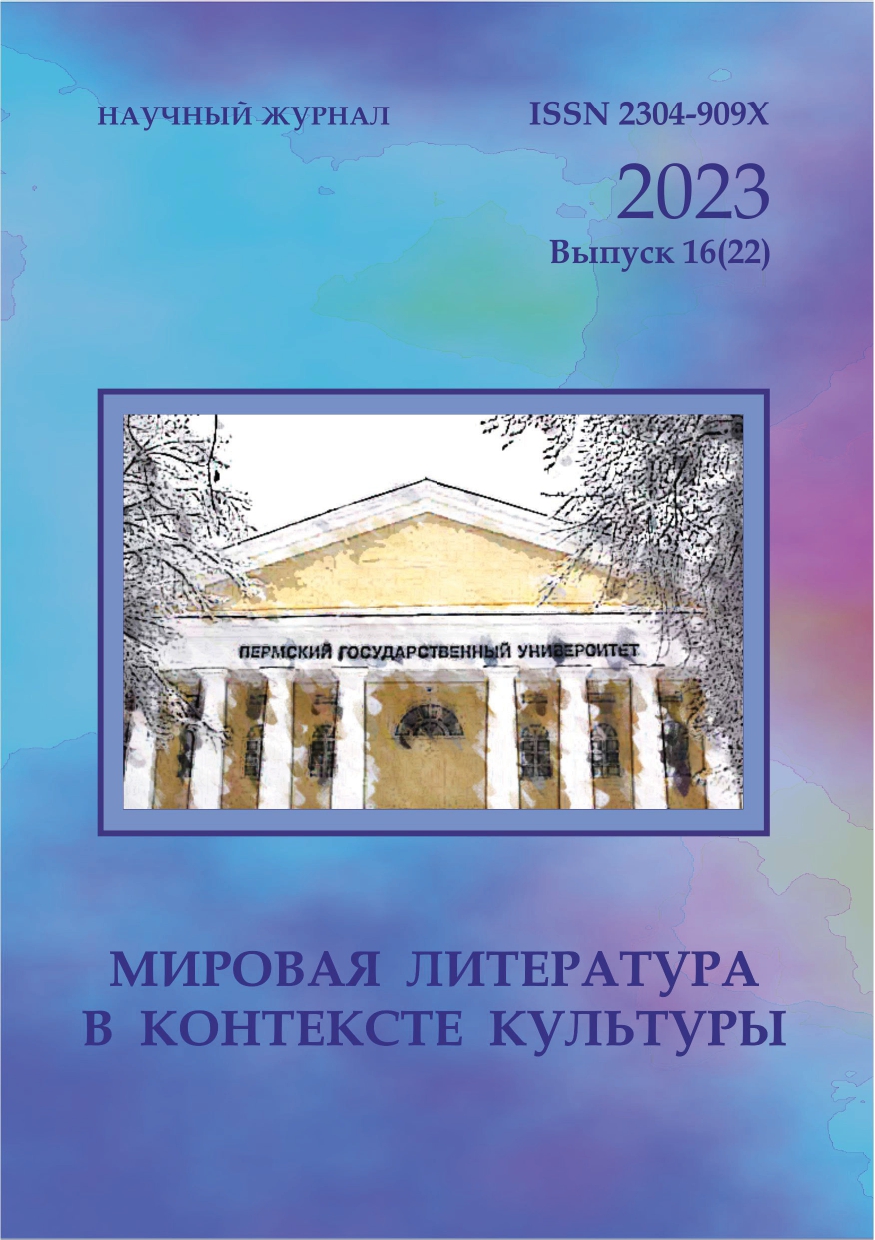Художественное изображение Французской революции в рассказе Э. Гаскелл «Мой учитель французского языка»
DOI:
https://doi.org/10.17072/2304-909Х-2023-16-107-114Аннотация
В статье рассматривается рассказ Э. Гаскелл «Мой учитель французского языка» (1853). Внимание уделяется исследованию особенностей изображения Французской революции в рассказе в сравнении с более поздней повестью «Миледи Ладлоу» (1859). Обнаруживается общность – отсутствие изображения собственно революционных событий, акцент на пагубном влиянии социального переворота (большой истории) на жизнь обычного человека, что достигается через введение такого субъекта речи, как рассказчик. Отличие заключается в отсутствии трагического элемента в изображении последствий революционных событий в рассказе, что, напротив, выдвигается на первый план в повести. Анализируется способ изображения детской психологии: эмоциональное восприятие и оценка исторических событий детьми вторят родительским. Также уделяется внимание интересу Гаскелл к истории и культуре Франции.Загрузки
Опубликован
2023-06-30 — Обновлена 2023-12-29
Версии
- 2023-12-29 (2)
- 2023-06-30 (1)
Как цитировать
Фирстова, М. Ю. (2023). Художественное изображение Французской революции в рассказе Э. Гаскелл «Мой учитель французского языка» . Мировая литература в контексте культуры, 16(22), 107–114. https://doi.org/10.17072/2304-909Х-2023-16-107-114 (Original work published 30 июнь 2023 г.)
Выпуск
Раздел
Статьи

